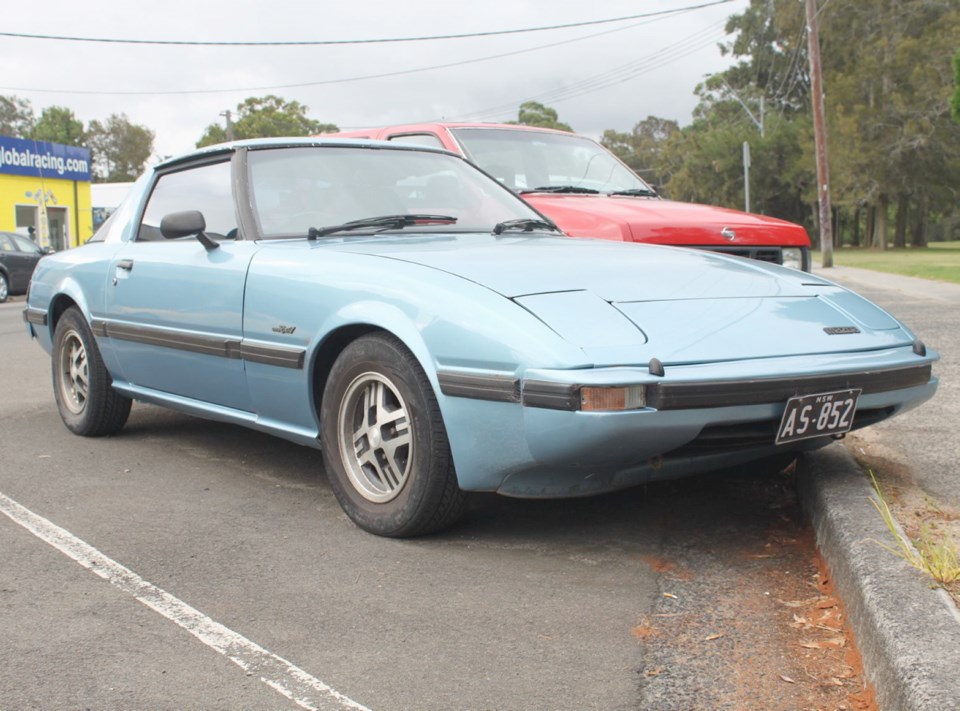Following the Second World War, the British introduced North America to a new kind of driving pleasure. It was called the sports car; light, relatively fast, usually open two-seaters with names such as MG, Triumph and Jaguar. They were a different breed of machine built for enjoyment, not practicality.
Although sports cars from other countries arrived, English marques continued to dominate through the 1950s and ’60s. Several American manufacturers such as Chevrolet, Crosley, Kaiser and Nash tried, but only the Chevrolet Corvette would survive.
Unfortunately, English manufacturers allowed their cars to languish technically in the 1960s, and the Japanese took advantage of the situation. Although there were others, the major impact was made by the stunning Datsun (now Nissan) 240Z two-seater coupe introduced to North America in 1970.
Several years later, another Japanese manufacturer, Mazda, re-entered the sports-car market with the Mazda RX-7. It came in 1978 as an attractively styled, good-performing and reasonably priced two-seater coupe. These qualities alone could have assured success, but the RX-7 had a much more significant role in the automotive world: reviving the Wankel rotary combustion engine.
The rotary was patented in the 1950s by German engineer Felix Wankel, and developed in collaboration with Germany’s NSU Motorenwerke. It would be the first successful assault on the reciprocating piston engine.
Its heart was a triangular rotor spinning eccentrically in a housing shaped like a fat figure eight. The resulting increasing and decreasing wedge-shaped chambers created by the rotor achieved the intake, compression, power and exhaust strokes of a conventional piston engine. The rotor was geared to the crankshaft.
The air-fuel mixtures entered through ports covered and uncovered by the rotor, and additional rotors could be added for more power. While pistons continued to predominate, Wankel showed that reciprocating pistons were not the only way; power could be produced in a continuous, smooth-rotating motion.
Mazda was not first. NSU had introduced the world’s first production rotary NSU Sport Prinz two-seater at the 1963 Frankfurt Auto Show. Production began the following year.
Mazda outbid other Japanese manufacturers for a Wankel licence. It had a fairly long development period, but it’s safe to say that without the tenaciousness of Mazda’s research director, later chairman, Kenichi Yamamoto, the rotary would likely have died. Others such as General Motors and American Motors tried and abandoned it.
Mazda’s first rotary car, the Cosmo Sport, arrived in 1967. Although there were problems, notably rotor sealing, Mazda confidently committed to the rotary. Rotary Mazdas such as the RX-2, RX-3 and RX-4 sedans followed, each improving Mazda’s Wankel knowledge.
But events conspired against the rotary. In the 1970s, pressure was increasing for improved fuel economy and lower emissions. Unfortunately, the Wankel rotary tended to emit more emissions than a piston engine and was a little thirstier for a given displacement, although not for engines of similar power.
In an economy-minded environment, these were significant disadvantages. Although they would be largely overcome, by the mid-1970s the rotary engine brought Mazda to its knees. It recovered by reverting to conventional piston engines and its small, simple four-cylinder GLC model was successful enough to save Mazda.
But Mazda was still convinced of the rotary’s future and concentrated on its development for sports cars, where there was more tolerance for technical novelty. The 1978 Mazda RX-7 rotary was the result.
Apart from its rotary engine, the RX-7 was fairly conventional. It was a unit-construction fastback two-seater with pop-up headlamps, a pert, wedge-shaped prow, glass rear hatch and clean and simple styling (with some Porsche 924 influences).
Road & Track’s test of a five-speed RX-7 recorded very good performance for a car of its displacement. The 1,156-cc, 100-horsepower, twin-rotor Wankel accelerated the 1,098-kilogram RX-7 to 100 km/h in 9.2 seconds and to 160 km/h in 27.8. Top speed was 196. At under $7,000 US — about $10,000 in Canada — R&T called it “an enthusiast’s dream come true.”
Through its eight-year life, the first-generation RX-7 was refined, but kept basically the same. Such enhancements as alloy wheels, four-wheel disc brakes and power steering became available, and in 1984 came a larger 136-horsepower engine.
Mazda also consolidated the rotary’s reputation in racing, with full vindication coming in 1991 when a four-rotor Mazda won France’s prestigious Le Mans 24-hour race, the first Japanese car to do so.
By the time the original RX-7 was replaced by the second-generation model in 1986, more than half a million had been built.
With the rotary RX-7, Mazda redefined the sports car and the persistence of engineer Yamamoto saved the Wankel engine after others had given up. Mazda manufactured the RX-8 rotary, the RX-7’s successor, until 2012.



